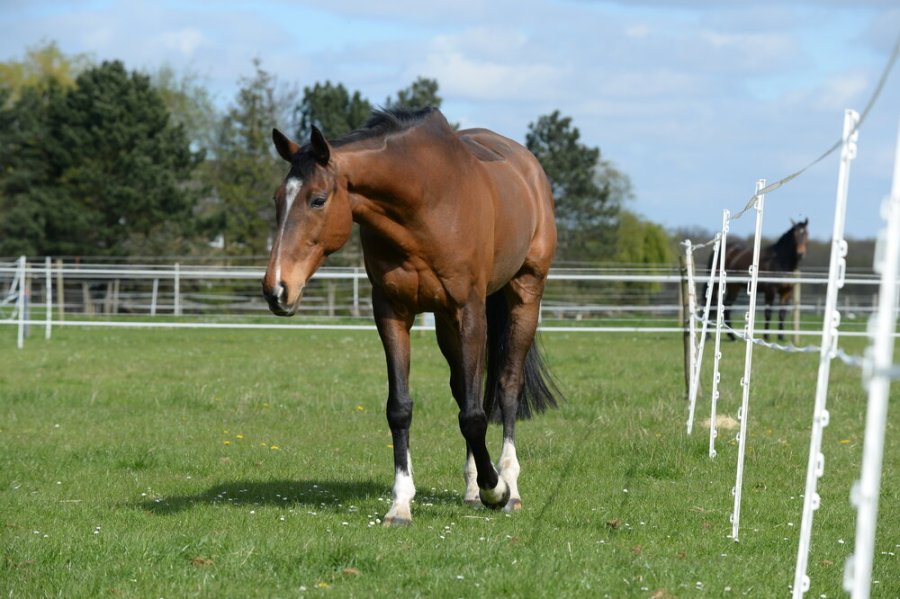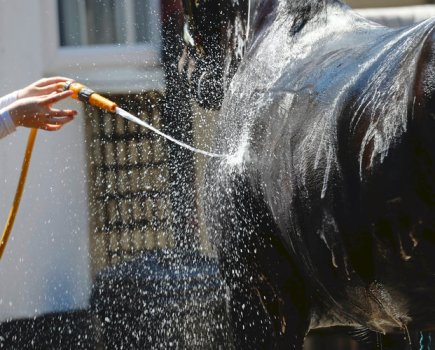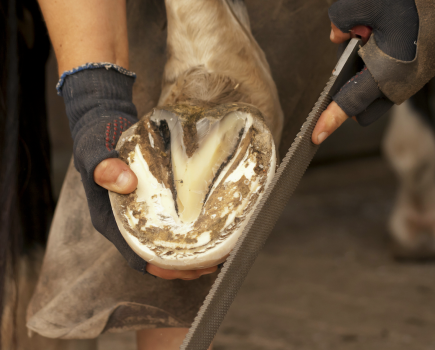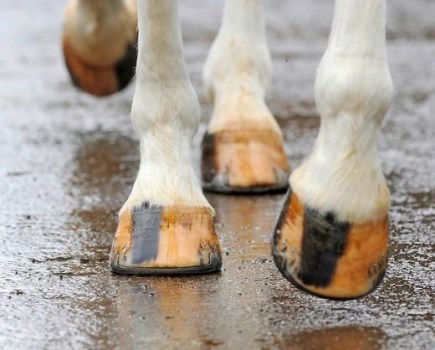Using a track system in your field could make all the difference to keeping your horse at a healthy weight. When grass is in abundance and horses are able to enjoy more time turned out in the field, managing weight gain becomes more problematic. However, a track system can help to keep them healthy — and also happy.
With ‘man made’ diseases such as laminitis, equine metabolic syndrome (EMS) and obesity plaguing many horses, people are constantly looking for new ways to return their charges to a more natural way of living. We want to encourage more movement, grazing and browsing on appropriate forage in their diet, and herd dynamics that enable horses to eat, play, mutual groom and rest together.
What is a track system?
One way of achieving a more natural way of living is the track system (also known as a paddock paradise). This is a way of managing horses based primarily on how they would live in the wild.
A track system involves a series of wide pathways through or around pasture that will encourage roaming behaviour, as the horses continually look for their next opportunity, be that for forage, shade, water, or scratching opportunities.
It certainly doesn’t mean neglecting horses and leaving them to their own devices, but replicating those aspects of their home range that benefit their health. One key part of this is increased movement. If you consider a healthy horse in the wild, they thrive when they are living in the way nature intended.
These are the benefits we want to see in our own horses. Movement helps to build muscle, burn fat, stimulate the hooves and keep the gut active and moving. We’re helping the horse to be the most physically fit and able version of themselves.
Benefits of a track system
When caring for a horse, I try to follow the ‘boom and bust’ feeding cycle of wild horses. This involves allowing horses to lose weight in the winter so that weight gained during the summer months will not tip the balance into poor health. A track system does this by making the horse work harder and spend more time looking for forage, just as they naturally would in the wild.
A track system also allows horses to spend time with others, which again has a multitude of benefits. Being with others of their own species meets their need to have a herd for safety, entertainment and camaraderie. This reduces stress which, in turn, means that they tend to be much calmer in their interactions with humans, but also more confident as individuals.
I’m often asked if being in a herd makes horses more likely to be herd-bound, but I actually find that after an initial settling period, the opposite is true. We know from research that chronic stress raises cortisol levels, which can eventually cause illness and behavioural problems. Therefore, the more naturally we can keep our horses, the healthier they will be.
Setting up a track system
I’m often asked whether anyone can implement a track system and, if so, how they should go about it. My answer is always yes, you can.
A track system is hugely adaptable and can work in many different situations. My yard is specifically set up to accommodate this system so we can commit to layout, design and enrichment. This may be trickier if your horse lives on rented land or at a livery yard, however the track system can be simplified to suit what you have available.
My first track system was just a simple loop around a one-acre field edge, but the difference it made to my horse was obvious within a few months. It cost me a couple of hundred pounds for fencing and an energiser. The important thing about this system is that it can be replicated to a greater or lesser extent wherever you keep your horse.
![]() Have you heard about Your Horse’s #FitNotFat campaign? Equine obesity is an enormous welfare problem and we’re on a mission to provide owners and riders with the knowledge, skills and information you need to keep your horse in tip-top health. It could be life saving! Find out more
Have you heard about Your Horse’s #FitNotFat campaign? Equine obesity is an enormous welfare problem and we’re on a mission to provide owners and riders with the knowledge, skills and information you need to keep your horse in tip-top health. It could be life saving! Find out more








